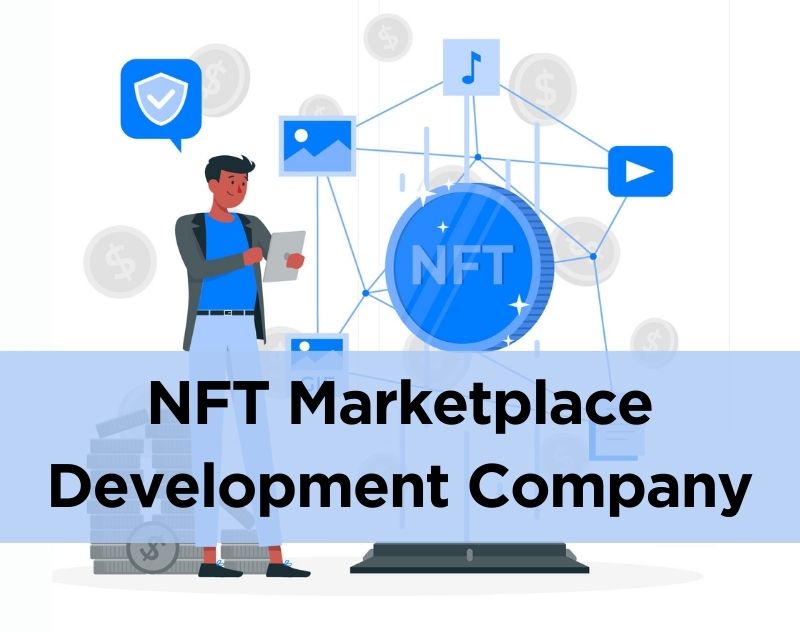Your business idea was a great success. Your product development was done without too much hassle. And, your product or service took the existing market by storm with a marvellous marketing strategy.
Now, what?
Now, you need to think about expanding your business, and for that, you need to formulate a long term growth strategy.
A growth strategy is crucial for your business if you want to stay relevant in the marketplace in the coming years. Just as a good growth strategy can make your business, a bad one can break it.
And, achieving consistent growth for your business is no mean feat. You need to consider a slew of factors, some volatile, before you can come up with a business growth strategy for your startup.
In this blog, we’ll take a look at how you can develop a growth strategy for your startup business.
Table of Contents
What Is the Difference Between Scaling and Growing?
How To Develop a Business Growth Strategy for Your Startup?
- Understand Your Target Market Well
- Analyse Your Competition Thoroughly
- Figure Out a Value Proposition to Sell
- Establish Long-Term Organisational Goals
- Choose a Prime Location
- Conclusion
What Is the Difference Between Scaling and Growing?
First things first, you need to figure out whether to scale your business or to grow it.
Wait a second! Isn't that basically the same thing?
No, contrary to popular belief, growing and scaling are not the same. So, what exactly is the difference between the two?
When you scale your business, you increase your revenue generation by offering more products and services without a considerable increase in the number of resources you employ. On the other hand, when you grow your business, you not only increase your revenue, but also increase the number of resources you have in your employ.
Scaling and growing have one thing in common: your bottom line increases in both cases, given your expansion strategy goes well.
If you think scaling your business is the right move for your organisational goals, then here are a few hand-picked pointers that can help you avoid some common challenges faced by startups when they undertake scaling.
How To Develop a Business Growth Strategy for Your Startup?
First things first, is your business ready to scale up?
A business strategy should be airtight and must be designed to encourage sustainable growth of the business over a period of time. We’ve put together some tips that will help you curate a business growth strategy that is uniquely tailored to your business needs:
1. Understand Your Target Audience Well

The receptiveness of your marketplace will ultimately determine whether your products and services are destined for sales history or meant to gather dust on a digital shelf.
In order to understand how well your target market can accommodate your business, you must first analyse your target audience and understand what exactly drives them. This, in turn, will help you to create a growth strategy that is customised to your customer’s liking.
- Is your target audience facing a deficiency that you can address?
- Can you make their lives easier with your products or services?
- What are the Unique Selling Points that your business has which will be of interest to your target audience?
In order to get a better understanding of your target market, you can do the following:
First, you need to identify and define your ideal customers from among your existing customers as well as potential customers.
Build yourself a strong research base by gathering intensive data such as their age, income bracket, gender, location, and demographics, among others.
Now, find out what your ideal audience likes and dislikes.
- What are their interests?
- How do they like to spend their money?
- Are they facing a problem that you can resolve for them?
This will help you figure out the wants and needs of your target audience. You can easily collect this data by sending out surveys through email marketing campaigns, for example.
Now, if your existing products do not match the preferences of your audience, you can either revamp your product or try to identify a more feasible market.
2. Analyse Your Competition Thoroughly

Never underestimate your competition. Haven’t you heard that you should keep your friends close and your enemies even closer?
If you think competitor analysis is not important, then you’re heading down a path that will ultimately end in your startup failing.
Stop for a minute and take a look at the other main reasons why startups fail within the first year. Don’t worry, we will also tell you how to overcome these challenges.
Competitor analysis can give you numerous advantages. While you browse through your competitors’ product and service offerings and their new campaigns, you’ll get plenty of ideas that you can use to increase sales and promote your own business.
For example, if you take a minute to go through your competitor’s social media pages, you’ll be able to see exactly how they engage the target audience you have in common.
You can then see how well your audience responds to them and tweak the shortcomings you find while developing a growth strategy for your business.
You can also get a heads up on the promotions and prices your competition offers. This will make it easier for you to set competitive pricing ranges for your products or services.
So, first, identify who is doing it best. Then, create a growth strategy that will help you deliver better results than your best competitor.
You can research who your competitors are by vigilantly monitoring social media platforms of companies offering the same product lines or solutions as yours, and by asking your existing customers who else they see as your competition.
Here’s a quick hack to see which direction your competition is planning to take their business: keep an eye on the job postings they make! You’ll be able to see what all new roles they need filled, which in turn will help you get an idea of the expansion strategies they have put in place for their own growth.

Simply put, a value proposition is something that adds value to your business offering and makes your company or product more desirable to your potential and existing customers.
A good value proposition aims to bring about positive change in your customer’s lives, which in itself will be the biggest selling point you can make. Ask yourself these questions:
- How can your products or services add value to your target market?
- How can you set yourself apart from your competition?
- Why should your customers choose your offerings over that of your competitors?
A value proposition should be an essential part of your company’s growth strategy, because at the end of the day, it’s all about how you can help increase the convenience of your target users.
When you have a value proposition to offer, you can show your end users what they stand to gain from giving you their custom.
For example, if you offer quality products at discounted prices, your value proposition is that your customers can get more value for their money if they shop with you.
If your value proposition is good enough to hook your audience, then you will be able to automatically increase your brand value as well, even if you are just a small business that is starting out on its entrepreneurial journey. Then, with a good expansion strategy, you can grow your business in the right direction.
Another reason you need to define a concrete value proposition is that investors won’t give you the time of the day unless you manage to floor them with your value proposition.
A value proposition is a crucial part of business plans and elevator pitches. It helps your investors understand how you aim to make your brand a household name.
It also shows them how you connect with your audience and try to solve their problems with innovations in your offerings.
Take a look at some of the other crucial factors investors consider while deciding to invest in your startup business.
You need to believe in your value proposition in order to be able to sell it, whether in hours or in seconds, as is the case with elevator pitches. So, make sure you choose one that really sets you apart from your competition.
Raising Startup Investment: Finding Right Investors & Alternative Fundings.
4. Establish Long-Term Organisational Goals

Consistency is key when it comes to executing your business growth plan.
And, in order to have consistency, you need to try to establish long-term goals with realistic milestones along the way.
If your startup lacks a vision and the passion to carry out that vision, then you aren’t really working towards anything. You’re simply getting by.
With long-term goals in place, your business plan and market growth strategy will have more credibility. Your employees will be more productive, and your overall business process will become more streamlined and less susceptible to confusion and human error.
If your goals are carefully punctuated with targets you need to meet, you will be able to implement a growth hacking strategy for the short-term goals and a more comprehensive marketing growth strategy for your long-term vision.
Now, it’s important to ensure that your goals are achievable. It’s easy to put them down on paper, but not quite as easy to implement them.
So, make sure that your goals are realistic and that the deadlines you set are reasonable.
Take a look at some key features of achievable goals:
- They are measurable and you will be able to track their progress.
- They are specific in nature and the resources allocated, stakeholder expectations, and deadlines are set in stone.
- They adhere to the deadlines and are completed on or within the stipulated timelines.
- They are relevant today and will continue to be relevant, say, 5 years from now.
Now, stop reading and start strategising!
Conclusion
There is no cut and dried method to creating business growth strategies. The different stages of business growth determines the kind of expansion strategy that you need to come up with during each phase.
Of course, it’s no mean task planning a solid business development strategy that has the potential to be executed to perfection. This shouldn’t deter you, however. On the contrary, it should push you to make your market development strategy as foolproof as possible.
In a nutshell, the market growth you see in your marketplace should determine the types of business strategy you should employ to grow your startup.
Want to know more? Read on to learn about the Top 15 Strategies to Quickly Grow Your Company in 2021.





























